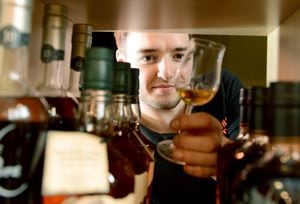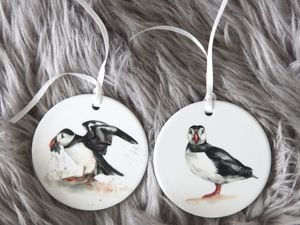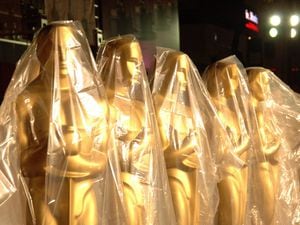Why whiskey sales are on the up
Jerome Marks-Gardener describes the appeal of Pikesville rye whiskey.

"It is just such high quality," he says, as he struggles for words to describe the complex blend of caramel, marzipan, pepper and licorice flavours.
"Jim Murray, the famous whiskey writer gave it a 97.5 rating, it is so good."
Jerome, the 22-year-old retail manager at the venerable Stourbridge wine merchant Nickolls & Perks, is typical of the new generation of connoisseurs who are turning to whiskey – and indeed whisky – in greater numbers. Young, knowledgeable, and with a desire to experiment with different flavours, he can fully understand why spirits are becoming the drink of choice for trendy urban sophisticates.
According to new figures from analyst Euromonitor, sales of American whiskies such as bourbon and rye last year passed £1 billion for the first time, with British consumers drinking more than 220,000 UK gallons. While much has been made about the growing popularity about gin in recent years, the Euromonitor report suggests that it is whiskey which has seen the real boom, with sales growing by nine per cent compared to seven per cent for gin.
Traditionally whiskey, when spelled with an 'e', relates to products distilled either in Ireland or the United States, as opposed to whisky which generally refers to malts made in most of the rest of the world, or Scotch, which refers to whisky made in Scotland from water and malted barley using specific methods laid down by law.
Jerome, who helps organise the Midlands Whisky Festival which will be held in Birmingham in September, says he has noticed a clear growth in popularity of the American whiskies in the last couple of years or so. Part of this may be down to its portrayal as a "hip" drink by television characters such as Don Draper in Mad Men and bourbon-swilling superhero Jessica Jones.
"Whistle Pig bourbon was also featured in Breaking Bad," adds James. "I'm sure it has made a difference."
He says there is also a growing interest in the cocktail markets, to which bourbon and rye are ideally suited. Much of the appeal is down to recent nostalgia for 1950s and 60s Americana, with The Old Fashioned – a favourite American drink in the 1950s – being last year's biggest selling cocktail on these shores. But there is also a growing trend for more experimental new varieties which can be paired up with barbecues, burgers and chicken wings.
"There are so many new designs and styles coming on board," says Jerome.
"Buffalo Trace, Michters and Four Roses are very popular.
"A lot of the bourbons are very versatile, which makes them ideal for the cocktail market."
The Euromonitor report says Scotch sales fell by one per cent last year – a statistic questioned by some in the industry – and analyst Spiros Malandrakis says the UK industry has missed a trick by failing to embrace the emerging cocktail culture.
"Scotch is extremely traditionalist, and uber-conservative when it comes to positioning and innovation, partly because it's a much tighter regulated industry," he says.
"It's been much more hesitant in embracing cocktail culture than American whiskey."
John Hitchin, 27, of the Alb Bar in Shrewsbury agrees. He says he has noticed a big surge in sales of American whiskies in the past 18 months to two years, with the cocktail market driving a lot of the demand.
"They are just a little bit sweeter on the palate, and they seem to appeal to the younger audiences," he says.
"I would say the Maker's Mark and Bulleit Bourbon are the most popular at the moment, they are the one's that people know and they are often the bartenders' choice."
He says they are bought by a mixture of people who want them in cocktails, and also by customers who will drink them "on the rocks".
"They are very good in cocktails because they are slightly sweeter, and they can be infused with other flavours quite well.
"Scotch single malts are so powerful in taste it's hard to mix them with anything else."
John, who is 27, says demand for American and Scotch whiskies are now roughly equal, although there is a very different age profile in the people who buy them.
"You do see a lot of young people drinking bourbon, the 18-30 age group drinks that," he says.
"I'm in that age bracket and I'm a fan, I particularly like Woodford."
But while bourbon and rye seem to be the drink of choice on the cocktail bar and club scene, Mike Hale of Wrekin Whiskies in Shrewsbury says Scotch is still far and away the biggest seller.
"I think it is growing in popularity in the pubs and the clubs, and we do stock more bourbons, but I wouldn't say it has made a big impact," says Mr Hale, from Admaston, Telford.
"It might be a big thing down in London, Manchester or Birmingham, but I don't detect a noticeable trend here.
"Scotch is still, far and away, our biggest seller."
He does, though, suggest people's tastes are generally becoming broader and more sophisticated.
"People are definitely going for quality at the moment, we find there's a lot of interest in Irish whiskey and in the Japanese whiskies.
"It's maybe over the past 15 years that people's drinking habits have changed. When the smoking ban came in, people stopped going into pubs, and started drinking more at home, and appreciating the better drinks more."





